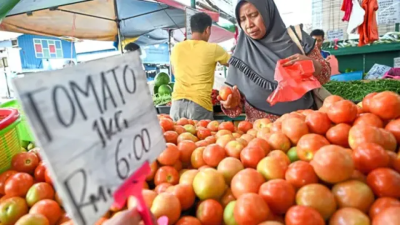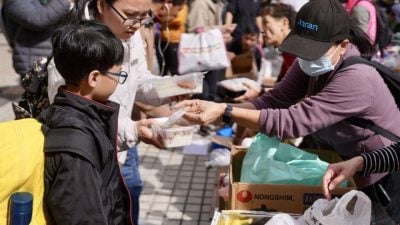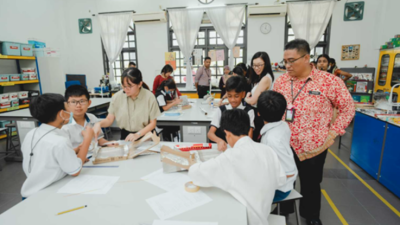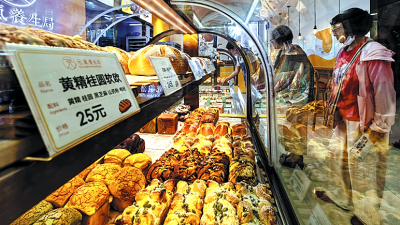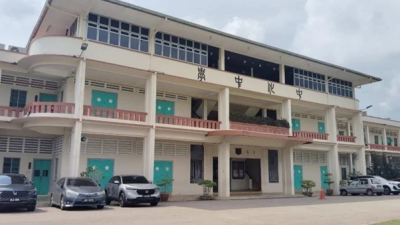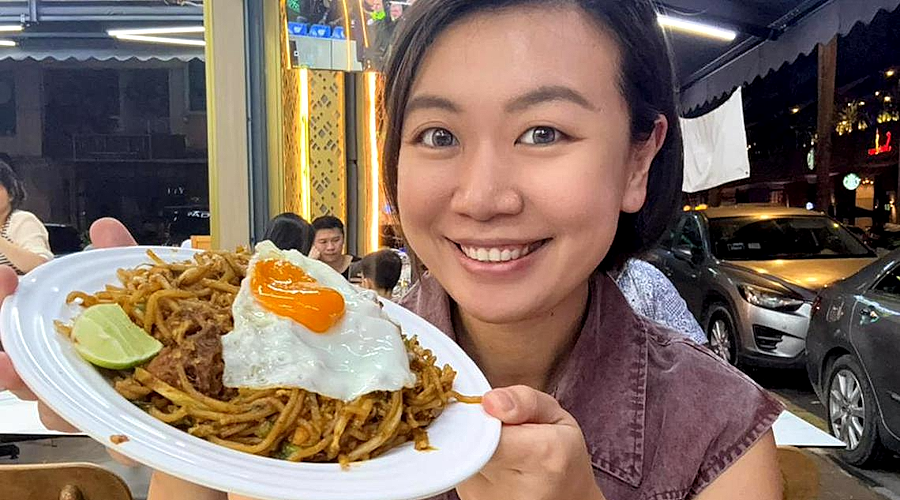
KUALA LUMPUR/PENANG: In her video posted on social networking platform Xiaohongshu, Shanghai-born Lauren Dai patiently explains in Mandarin how to order standard Malaysian fare like teh tarik, roti tisu (a thinner, crispier version of the traditional roti canai or roti prata) and mee goreng like the locals, while seated in a bustling mamak restaurant in the heart of Kuala Lumpur.
Ms Dai has been living in the capital city’s expatriate enclave of Mont Kiara since 2019, after obtaining a Malaysia My Second Home (MM2H) visa that grants her residency for 10 years.
Like many of her compatriots drawn to the South-east Asian country’s affordable housing and more relaxed lifestyle, she was escaping “neijuan”, or involution, a term referring to the rat race and overly competitive lifestyle in China.
“My last 20 years in fast-paced Shanghai and Hong Kong have been exhausting. In China, there’s no such thing as the end of the work day. WeChat blurs the lines between private and work life. I couldn’t post a travel photo online without responding to a client,” the 38-year-old online advertising executive told The Straits Times.
“But in Malaysia, WhatsApp doesn’t invade my personal life. E-mail is the preferred method of work communication. I can take a break from it during my holiday,” said Ms Dai, who set up an advertising consultancy business in Malaysia and works closely with a team in Shanghai.
She is one of 26,162 mainland Chinese with MM2H status as at December 2024. The mainland Chinese make up the largest proportion, or 45 per cent, of the scheme’s 57,686 participants, drawn to Malaysia for retirement, education and investment purposes.
The remainder hail mainly from South Korea, Japan and Bangladesh, with a handful from Taiwan and Hong Kong.
Mainland Chinese MM2H applicants have been steadily increasing over the years, accounting for the largest number from any country since 2013.
According to Malaysian government data, of the 2,195 MM2H applicants from September 2024 to January 2025, the biggest number, or 53 per cent, was from China, followed by the Taiwanese (8 per cent) and Hong Kongers (6 per cent).
This generated US$152.8 million (RM671 million) in fixed deposits and RM681 million in property investments for that period.
Introduced in 2002, MM2H, which allows foreigners to reside in Malaysia on a long-term basis, was initially aimed at attracting well-off retirees. It was temporarily suspended in August 2020 and again in 2023 to review the scheme’s residency requirements.
From 2002 to 2019, the programme managed to stimulate the country’s economy with a cumulative gross value-added income of RM11.89 billion through visa fees, property purchases, personal vehicle purchases, fixed deposits and monthly household expenditure.
The most recent adjustments to the MM2H scheme in 2024 require applicants to have a minimum fixed deposit of US$150,000 and to purchase property worth at least RM600,000.
In addition, the property must be held for at least 10 years. However, proof of monthly fixed income is no longer required.
Stricter criteria have not deterred the mainland Chinese from applying for the scheme, said Mr Anthony Liew, 46, president of the MM2H Consultants Association, who has 13 years of experience as an MM2H processing agent.
“China is facing the issue of neijuan. If students are unable to enter elite high schools after Junior Middle Three (the equivalent of Secondary 3 in Singapore) in China, they are forced to attend vocational schools.
“Those who can afford it are concerned that their children will end up in blue-collar jobs and face discrimination. They prefer to send their children to Malaysia, especially Kuala Lumpur, to attend international schools, hoping they’ll have a better chance of becoming white-collar professionals,” he told ST.
Penang-based property agent Lisa Chan, 51, observed: “Some 80 per cent of my clients in 2025 are from Greater China, compared with none when I started in 2013. More mainland Chinese are coming to Penang for retirement or education.”
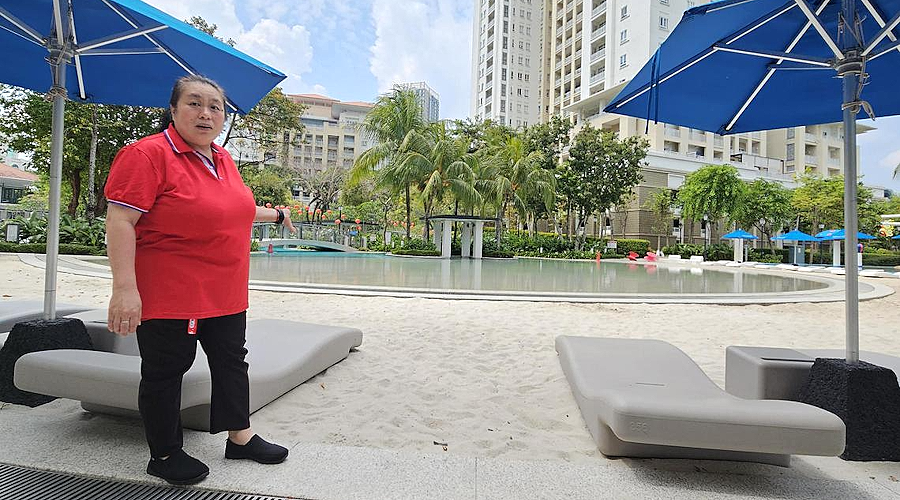
Differences ruffle feathers
Not all MM2H visa holders have settled in the wider Kuala Lumpur area, which has 141 international schools in all.
A Taiwanese MM2H aspirant who wanted to be known only as Ms Huang, citing privacy concerns, recently enrolled her nine-year-old daughter in one of Penang’s 12 international schools for the English-based education and to shield her from examination stress.
Ms Huang, 49, who runs her own trading company dealing in consumer goods, arrived in Malaysia with her child in December 2024. She plans to apply for MM2H soon, no matter how long her girl continues to study in Malaysia.
She sees herself living in Penang in the longer term, and has her eye on a prospective dwelling with a sea view, not far from state capital George Town.
“I am planning to buy a similar-sized home in Penang at 25 per cent of the cost (of my old apartment). With Penang’s mix of English, Mandarin and Hokkien, I have no communication issues,” said Ms Huang, who has already sold her flat in Taipei.
While affluent MM2H residents from mainland China are a boon to the Malaysian economy, challenges have arisen in areas such as education and business, due to language issues and cultural differences.
Penang’s international schools have imposed a cap of 20 per cent on mainland Chinese students in each class to maintain diversity and avoid having “all-Chinese” cohorts, noted Ms Chan, a senior real estate staff member at Chin Housing Realty, who had helped Ms Huang settle in by offering services like airport transfers and bill payments.
“It would be difficult to nurture an English-speaking environment if more than half the students were from China,” she said.
Meanwhile, the owner of a Kuala Lumpur-based interior design and renovation firm, who wanted to be known only as Mr Ting, said Chinese clients stress him out with their demands, even as he faces pressure from mainland Chinese rival businesses.
While an interior design proposal for a three-bedroom, 1,200 sq ft condominium unit may take Malaysian firms 10 to 14 working days to complete, Chinese firms can do the same in half the time, he said.
“Chinese clients prioritise efficiency and often message their requests late at night. In China, you are expected to respond promptly. But in Malaysia, our designers do not work round the clock,” he added.
Some MM2H residents even hire mainland Chinese designers who visit Malaysia as tourists under the 30-day visa-free scheme, he claimed. “The designers carry out all their measurements and then return to China to deliver the proposal, which can be cheaper,” Mr Ting told ST.
Over in her neighbourhood near Universiti Sains Malaysia on Penang Island, film-maker Tang Siang Ching has seen the number of mainland Chinese eateries grow from two to 10 in recent years, fuelled by the influx of students, retirees and migrant workers.
While she appreciates the added liveliness and food choices in the area, the 48-year-old filmmaker has mixed feelings about the changes.
“At first, I enjoyed the variety of food, but I wonder if this trend will last. What will happen to these restaurants if Chinese students (and others) stop coming? What’s the plan going forward?” said Ms Tang.
A clear view of the night sky
Still, many mainland Chinese MM2H residents have adjusted to the local culture and even offer tips on how to get along with Malaysians.
Among them is Ms Dai, who said: “I always hang out with Malaysians because it’s through these local experiences that you truly understand the country. They often take me to try mamak restaurants or other local foods.”
Penang is also attractive to Hong Kongers, who value the geographical similarities and three-hour flight time between the two islands.
Penangite Ben Lo, 51, who spent many years living and working in Hong Kong, estimates there are around 200 Hong Kongers living in Penang, drawn to the retirement and investment opportunities amid a laid-back island lifestyle.
Mr Lo, the owner of Pennapra Private Dining, recalled a friend visiting from Hong Kong many years ago who became very excited upon seeing Penang’s night sky. “My friend stuck his head out of the car window along a highway. I told him to be careful, worried about the risk of an accident. But he replied, ‘Bro, I haven’t seen a clear sky and stars in years!’” Mr Lo recounted with a chuckle.
A retiree couple from mainland China, who wanted to be known only as Mr P and Ms Sun, have been enjoying a slower pace of life since settling in Penang in September 2024.
“Over-efficiency (and overwork) damaged our relationship in China. Kuala Lumpur is a good place, but it doesn’t suit our slower pace of life. Penang is better – there’s no neijuan here. Sure, I might have to wait a few extra days to get my air-conditioner fixed here, compared with China’s one-hour home service, but I’m satisfied,” Mr P told ST.
(Lu Wei Hoong is Malaysia correspondent at The Straits Times. He loves to travel and discover hidden gems of stories.)
ADVERTISEMENT
ADVERTISEMENT






